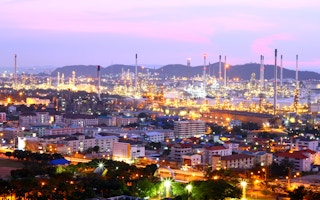Figuring out the clean-energy transition is a puzzle society must solve to secure sustainable prosperity in Asia. To tackle the puzzle policymakers, investors and operators met in June at two back-to-back renewable energy events in Manila. The transition, it became clear during a week of presentations and discussions, is at risk of taking longer and costing more because visions to guide the way ahead are missing.
To continue reading, subscribe to Eco‑Business.
There's something for everyone. We offer a range of subscription plans.
- Access our stories and receive our Insights Weekly newsletter with the free EB Member plan.
- Unlock unlimited access to our content and archive with EB Circle.
- Publish your content with EB Premium.
A vision offers a well-reasoned picture of a desired future state, in this case a low-carbon, low-water electricity system. Comparing the current situation with the vision helps policymakers plot better pathways from one state to the other. A vision brings light to illuminate the way forward when facts are insufficient or conflicting, yet action must be taken bearing in mind the values which shape our societies, preferences and aspirations.
Take solving a jigsaw puzzle for example. Putting the pieces together in the most efficient way possible is easier with a clear picture of the finished puzzle. Similarly, building the clean-energy electricity system will be easier with a clear vision, or picture, by which to fashion the goals and steps of strategy to pursue transition from carbon energy to renewable energy.
Visions of what a clean energy electricity system will look like and how it will work are crucial because the scale and speed of change is unprecedented, the first full energy transition since the beginning of the industrial revolution. It requires coordinating dozens of governments, hundreds of agencies, thousands of firms, and trillions of dollars across Asia. And it must be complete in a few decades for a good chance of avoiding the worse of climate change for Asia.
Yet vision is notably absent among key players in Asia’s energy ecosystem, a situation well-illustrated in a working group to examine the future of the power grid. The working group was one of several in a session organized by the German development agency GIZ during the Asian Clean Energy Forum, an annual event convened in June at the Asian Development Bank’s Manila headquarters.
The working group’s regulators and managers from around Asia and the Pacific could not point to a clear, coherent vision which their ministry, agency or utility was using to navigate the process of transformation. Nor were the drivers of transformation – climate change and technological innovation – clearly grasped. That is understandable given the complexity of the transformation from carbon to decarbonized electricity system.
Nevertheless, the working group suggests hope because the value of vision for transformation was recognized. Negotiating the political and economic challenges of crafting visions for transformation is of course another matter.
Hope also rises in the ingenious business models presented at the International Off-grid Rural Electrification Conference which preceded the Forum. The electrification problem persists for hundreds of millions of people in Asia because of geography, poverty and capabilities. Fortunately, many tailored solutions are now finally feasible because of the falling costs of renewable energy, especially solar.
Innovative firms, such as Gham Power, Mera Gao, Sunlabob, Orb Energy and Indigo Energy are beginning to solve the problem with commercial approaches rooted in the characteristics of renewable energy and the socio-economic contexts of developing countries. While most focus on solar, All Power Labs’s showed-off a novel gasifier sustainably turning biomass into electricity.
The juxtaposition of events tackling the problems of electrification and the problems of energy transition highlights two contrasting challenges for Asia. One, provide sustainable energy, especially electricity, to hundreds of millions of people living without power. Two, simultaneously transition a few billion people who are comfortable with the carbon-energy system to renewable energy. Solving both will be simpler and cheaper with complementary visions to guide policy and investment.
Indeed, the events emphasized that drafting and implementing effective policies requires more attention and sustained commitment in Asia. Clear, consistent policy is the key to reducing risks and costs for public agencies and private investors.
That paves the way for long-term planning to sustainably-harness renewable energy, the fastest technology to cleanly deliver the benefits of electricity and set societies on low-carbon development pathways.
In fact, the increasing cost-effectiveness of biomass, solar, wind, and storage promises to solve the problem of rural electrification, perhaps within a decade. Meanwhile, switching large power systems to clean energy will be cheaper than dealing with the risks and damage of climate change. Electricity in Europe, for example, is forecast to be 60 per cent renewable by 2030 after trillion dollars of investment. The challenge is no longer technology, getting policy right is.
Once the vision is in place to shape stable long-term policy, the door will open to a wider range of financing models leading to lower costs and more potentially viable projects sooner. But only after improving regulation and administration, which in many countries cause unnecessary delays and raise costs and risks deterring investors.
Fortunately, a range of policies from around the world can be adapted and enhanced to accelerate transition in Asia. The quantity of financial capital, such as climate bonds, is only rising. And the technology is advancing across generation, storage and grids at all scales. As with building a house, it will be cheaper, faster and smarter with a clear vision providing a broader view of what we are working towards.
David Fullbrook is an ecological economist and a senior consultant with DNV GL Energy’s Clean Technology Centre in Singapore advising policymakers and executives on renewable energy strategy and policy. He writes in a personal capacity.










